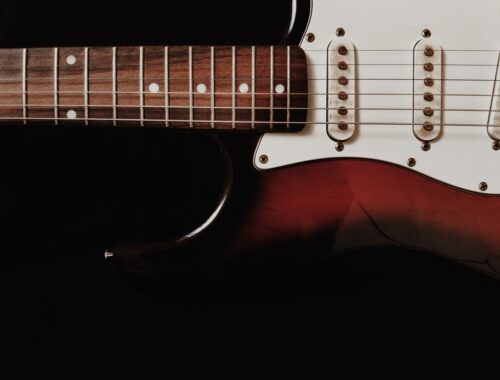
Use Alternate Picking
How To Alternate Pick on Guitar?
Alternate picking is a fundamental technique that every guitar player must learn. It is a technique that allows you to play faster, cleaner, and with less effort. Alternate picking involves using a combination of downstrokes and upstrokes to pick the strings in a smooth, flowing motion. In this article, we will explore how to alternate pick on guitar and some tips to help you master this technique.
Getting Started
Before we dive into the specifics of alternate picking, it’s important to have a basic understanding of the mechanics involved. To start, hold your guitar pick between your thumb and index finger. Make sure to grip the pick firmly, but not too tightly. Too much tension can make it difficult to move your wrist smoothly.
When alternate picking, the goal is to maintain a steady rhythm by using a combination of downstrokes and upstrokes. The easiest way to start practicing this is by simply picking one string with a consistent rhythm using only downstrokes. Then switch to using only upstrokes. Once you’ve mastered each stroke individually, begin to combine them.
Alternate Picking Technique
To alternate pick, use a combination of downstrokes and upstrokes in a steady rhythm. When you play a note with a downstroke, your pick should move downwards towards the floor. When you play a note with an upstroke, your pick should move upwards towards the ceiling. This motion should be fluid, with no sudden jerks or stops.
As you begin to alternate pick, it’s important to focus on maintaining a consistent tempo. It can be tempting to speed up or slow down as you switch between strokes, but this can lead to a sloppy, uneven sound. Start by practicing with a metronome, gradually increasing the tempo as you improve.
One way to practice alternate picking is to use a simple exercise called the “one note per string” exercise. Start by playing the low E string with a downstroke, then the A string with an upstroke, and so on. This exercise is great for building speed and accuracy, and can be easily modified to include more complex patterns as you progress.
Another helpful exercise is the “four note per string” exercise. This exercise involves playing four notes on each string, using alternate picking. Start by playing the first note on the low E string with a downstroke, then the second note with an upstroke, the third note with a downstroke, and the fourth note with an upstroke. Once you’ve played all four notes, move up to the next string and repeat the process. This exercise can be challenging at first, but with practice, you’ll be able to play it smoothly and accurately.
Common Mistakes
When learning to alternate pick, there are a few common mistakes that many beginners make. One of the most common mistakes is tensing up your picking hand. This can make it difficult to move your wrist smoothly, leading to a choppy sound. Make sure to relax your picking hand, and focus on using a smooth, flowing motion.
Another common mistake is to move your hand too much when switching between downstrokes and upstrokes. This can make it difficult to maintain a consistent rhythm. Instead, try to keep your hand close to the strings and use a small, controlled motion when switching between strokes.
Finally, many beginners struggle with muting unwanted strings. When you alternate pick, it’s important to mute the strings you’re not playing to avoid unwanted noise. To do this, lightly rest your picking hand on the strings you’re not playing, using the edge of your palm to mute them.
Tips for Mastering Alternate Picking
Here are a few additional tips to help you master alternate picking:
- Start slow and gradually increase the tempo as you improve.
- Use a metronome to maintain a steady rhythm
- Practice with a variety of exercises, including one note per string and four note per string exercises.
- Focus on accuracy and clean technique, rather than speed.
- Experiment with different pick gauges and materials to find the one that feels most comfortable for you.
- Practice alternate picking with different chord progressions and scales to build your repertoire.
- Watch videos of other guitar players to observe their alternate picking technique and pick up tips.
- Record yourself playing and listen back to identify areas where you can improve.
- Incorporate alternate picking into your regular practice routine, even if you’re working on other techniques.
- Be patient and persistent. Alternate picking can be a challenging technique to master, but with consistent practice, you’ll start to see improvement.
Alternate picking is a fundamental technique that every guitar player must learn. By using a combination of downstrokes and upstrokes in a steady rhythm, you can play faster, cleaner, and with less effort. When learning to alternate pick, focus on maintaining a consistent tempo, relaxing your picking hand, and muting unwanted strings. Practice with a variety of exercises, incorporate it into your regular practice routine, and be patient and persistent. With time and practice, you’ll be able to master this essential technique and take your guitar playing to the next level.

Play With Other Musicians
You May Also Like

Practice Fingerpicking Techniques For Guitar
April 21, 2023
Essential Guitar Chords for Beginners
October 19, 2023
